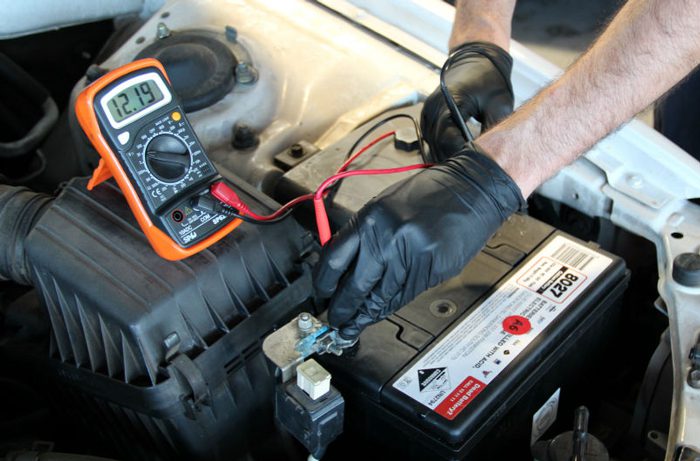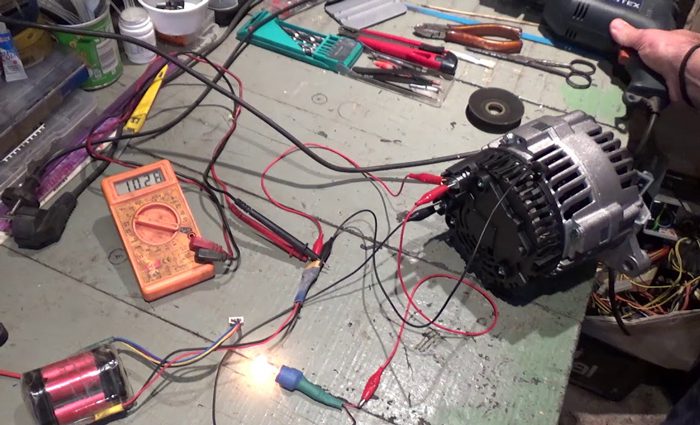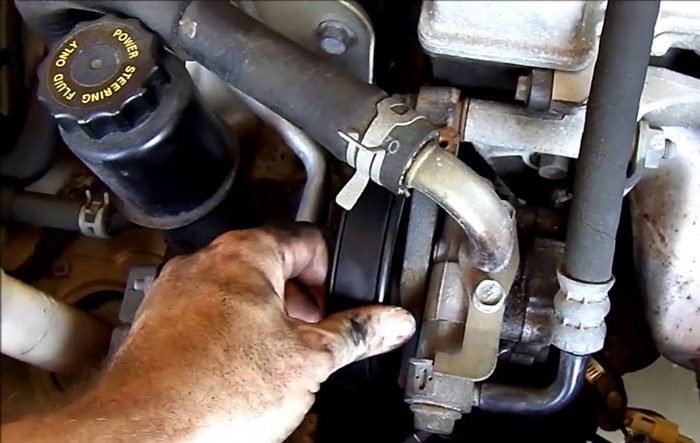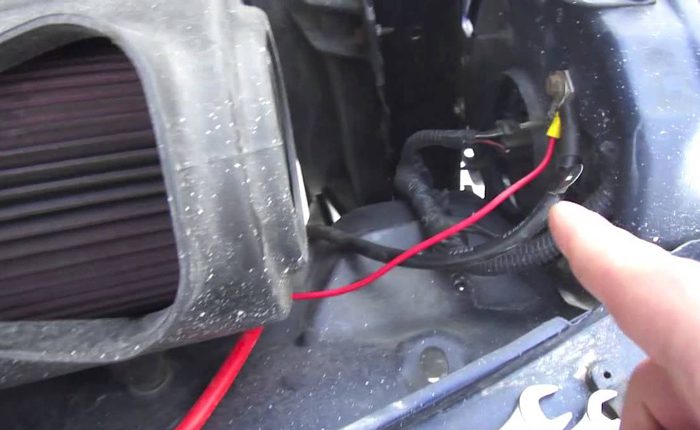Car Dies While Driving Battery Light Comes On – 5 Causes And Quick Fixes
An unexpected vehicle breakdown can cause significant anxiety in any driver. One particular scenario is when your car unexpectedly stops working. This is then accompanied by the illumination of the battery light on your dashboard.
So, here is why does car dies while driving battery light comes on;
- Battery issues
- Corroded terminals
- Alternator problems
- A broken serpentine belt
- A faulty voltage regulator
- Damaged wiring
- Blown fuses
- A bad ground strap
In the sections that follow, we’ll go over each of these possible causes and give you tips on how to recognize the symptoms. We will also discuss the costs associated with resolving these issues. In addition, we will consider some preventative measures to address the problem before it arises.
Common Causes And Solutions Of Why A Car Dies While Driving Battery Light Comes On
Here is a detailed discussion of the symptoms, causes, and solutions of this problem.

1. Battery Problems
Several battery problems can cause a car to die. These include:
- A dead battery
- An aging battery
- Corroded battery terminals
- Poor connection between the battery and cable clamps
Symptoms of a bad battery:
- Slow or hesitant engine cranking when starting the car.
- Dimming headlights or interior lights.
- Clicking sound when turning the key.
- Battery light illuminates.

Diagnosis:
Measure the voltage across the battery terminals using a multimeter. A completely charged battery should have a voltage of roughly 12.6 volts. Something much lower symbolizes a dead or weak battery. Inspect the battery terminals and cable clamps for signs of corrosion or damage.
The Fix: To replace a battery
- Ensure the ignition is off and the vehicle is in park.
- Use a wrench to loosen the nut on the negative (-) terminal, followed by the positive one, and remove the cable from the battery.
- Remove the battery from its tray and place the new battery in the tray. Then, reconnect the positive and negative terminal.
- Ensure both terminals are snug but do not overtighten.
- Turn on your vehicle to test if it starts smoothly.
The Fix: To clean corroded battery terminals and cable clamps
Remove the negative terminal of the battery, followed by the positive one. Mix a solution of baking soda and water. Use a wire brush to scrub the terminals and cable clamps until they are clean and free of corrosion. If the clamps are damaged, ensure you replace them.
Rinse the terminals with clean water and dry them thoroughly. Then, re-attach the terminals, the positive one first.
Costs:
Typically, a new battery costs approximately between $100 and $250. The labor costs range from $20-$60, depending on the location of the dealership. For cleaning corrosion, you will pay $5-$20.
2. Alternator Problems
The alternator is responsible for generating electricity to power various electrical components and recharge the battery while the engine is running.
If the alternator gets faulty, the car can die while driving. Causes of alternator problems include worn-out brushes, faulty voltage regulators, and bearing failure.
Other Symptoms of a bad alternator
- Dimming lights
- Strange noises such as grinding, whining, or squealing sounds, particularly when the engine is running.
- Dead battery
- Battery warning light
- Electrical issues

Diagnosis:
Locate the alternator, which is usually located near the front of the engine and is connected by a belt. Visually examine the alternator for visible cracks, frayed wires, loose connections, or leaking fluids.
Also, examine the voltage regulator for signs of damage. It may be a separate component mounted on the back of the alternator or integrated within the alternator housing.
The Fix:
Fixing alternator issues is a task best left to experienced mechanics due to its complexity. However, if you’re well-versed in automotive repair, here’s a simplified guide:
- Ensure the ignition is off and the battery is disconnected.
- Loosen the tension on the drive belt using a wrench or a tensioner tool. Slide the belt off the alternator pulley.
- Disconnect the electrical wires from the alternator with caution. Ensure to label them for reassembly.
- Unbolt the alternator from its mounting bracket and install the new alternator, securing it with the mounting bolts.
- Reattach the electrical wires to the new alternator and slide the drive belt back onto the alternator pulley.
- If the voltage regulator is damaged, ensure you replace it before replacing the alternator. You will need professional assistance for cases in which the voltage regulator is within the alternator.
- Reconnect the vehicle’s battery and start the vehicle to observe its performance.
Costs:
Replacing the alternator and a voltage regulator can typically cost between $300 and $800. This includes parts and labor.
3. Serpentine Belt Failure
The serpentine belt, often referred to as the drive belt, is a single, long belt that snakes its way through various pulleys. It connects and powers critical components like the alternator, power steering pump, water pump, and air conditioning compressor.
Causes of serpentine belt failure include normal wear and tear, age, heavy strain, etc.
Diagnosis and Symptoms of Serpentine Belt Failure:
- Squealing or screeching noises coming from the engine area during operation.
- A sudden loss of power steering.
- The belt also drives the water pump, so a failed belt can lead to engine overheating due to inadequate coolant circulation.

The Fix:
- Refer to your vehicle’s owner’s manual or a repair guide to locate the serpentine belt and its routing.
- Use a wrench to release tension on the belt by turning the tensioner pulley in the appropriate direction.
- Carefully slide the old belt off the pulleys, noting its routing. A diagram may be available under the hood or in the manual to assist with reinstallation.
- Thread the new serpentine belt through the pulleys, following the correct routing.
- Use the wrench to apply tension to the belt, ensuring it’s snug.
The Cost:
The average cost of serpentine belt replacement is between $110 and $135. Labor costs are estimated to be between $59 and $74, with parts costing between $50 and $60.
4. Bad Wiring
Wiring and connections in your vehicle serve as critical pathways for electrical signals, and any disruption can result in troublesome situations. The common causes of bad wiring are corrosion due to exposure to moisture, physical damage or neglecting routine maintenance.
Diagnosis and Symptoms of Bad Wiring
- Check for Erratic operation of electrical components, such as lights, power windows, or the radio, which can signal wiring problems.
- If problems come and go, it may indicate loose or damaged connections.
- Blown Fuses
- Warning lights related to electrical problems, such as the check engine light or ABS light, can illuminate.

The Fix:
- Determine the specific wire or connection that is causing the issue. Visual inspection is frequently the first step.
- If you find damaged wiring, repair it by stripping back the insulation, reconnecting the wires, and insulating them with electrical tape or heat shrink tubing. If the damage is severe, consider replacing the entire wire or harness.
- Disconnect any corroded connectors and clean them using a wire brush or an electrical contact cleaner. Ensure they are dry and apply dielectric grease to inhibit future corrosion.
- Tighten any loose connections, such as loose wire nuts or terminal bolts.
- If a specific component, such as a sensor or switch, fails, replace it according to the manufacturer’s instructions.
- If electrical issues persist, check and replace any blown fuses. Be sure to use the correct amperage-rated fuse.
- Reconnect the vehicle’s battery, start the vehicle, and verify that the electrical issues have been resolved.
The Cost:
Simple repairs can cost $50 to $100, whereas extensive rewiring or harness replacement can cost $200 to $1,000 or more. Professional labor costs will also affect the final cost.
5. Bad Ground Strap
A ground strap, also known as the negative battery cable, provides a strong electrical connection between various components and the vehicle’s chassis.
It is usually black and ensures a secure connection and continuous flow of electricity throughout your vehicle’s electrical system. Causes of a bad ground strap are corrosion, loose connections, or damage.
Diagnosis and Symptoms of a Bad Ground Strap:
- Reduction in power to interior electrical components.
- Battery not charging
- You might hear a crackling noise during a start attempt, yet the engine fails to ignite.
- Dimming lights when the electrical system is not adequately grounded.

The Fix:
- Identify the ground strap, typically a braided or flat wire running from the vehicle’s chassis to the engine block or other components.
- Examine the ground strap for signs of corrosion, damage, or loose connections. Pay close attention to the points where the strap connects to the chassis and other components.
- If corrosion is present, clean it using a wire brush or sandpaper until the metal surfaces are free from oxidation.
- If the ground strap is damaged or frayed, it may need to be replaced. Alternatively, you can repair minor damage by splicing and reconnecting the strap.
- Ensure the ground strap is securely attached to both the chassis and the component it connects to. Tighten any loose connections.
- Reconnect the vehicle’s battery, ensuring a secure connection.
The Cost:
In comparison to other automotive repairs, the cost of repairing or replacing a broken ground strap is relatively low. A new ground strap typically costs between $10 and $50, depending on the vehicle’s make and model.
As a result, you can expect to pay between $50 and $100 in total for parts and labor to address a bad ground strap issue.
Here is a video talking more about the above.
Practical Preventative Maintenance Tips:
- Follow the Maintenance Schedule: Consult your vehicle’s owner’s manual for the manufacturer’s recommended maintenance schedule and adhere to it.
- Keep Records: Maintain a detailed record of all maintenance and repairs. This can help track your vehicle’s history and identify recurring issues.
- DIY or Professional Service: While some maintenance tasks can be DIY, it’s advisable to have more complex tasks performed by a qualified mechanic.
- Use Quality Parts: When replacing parts, choose high-quality, manufacturer-recommended products for optimal performance and longevity.
- Regular Inspections: Periodically inspect your vehicle for signs of wear, damage, or unusual noises. Address any issues promptly.
- Drive Cautiously: Avoid aggressive driving habits, such as rapid acceleration and hard braking, which can accelerate wear and tear.
- Maintain a Clean Vehicle: Keeping your car clean and free from debris can prevent rust and corrosion.

FAQs
Here are other related questions on why a car dies while driving, and the battery light comes on.
While your vehicle may continue to run for a short time with the battery light on, relying on it for an extended period is risky. Driving while the battery light is illuminated may result in a dead battery, stalling, or even a breakdown.
Here’s what to do:
- Safely pull over to the side of the road or a parking lot, if possible.
- Turn off your vehicle’s engine to conserve the remaining battery power.
- Activate your hazard lights to alert other drivers.
- If you have jumper cables and a willing helper with a running vehicle, you can attempt a jumpstart.
- If a jumpstart is not possible, contact a towing service for assistance.
Yes, using too many accessories in your car at the same time can result in a dead battery or other electrical issues. Many accessories, such as the radio, air conditioning, and lights, are powered by the vehicle’s electrical system.
When multiple accessories are used at the same time, they can place a significant strain on the battery and alternator.
Conclusion
When the battery light on your vehicle illuminates while you’re driving, it’s a clear indication that something is wrong. The causes can range from problems with the alternator, wiring, the battery itself, or the use of too many accessories.
If you find yourself in this situation, it is recommended that you take immediate action by turning off non-essential electrical systems and heading to the nearest auto repair shop.
The good news is that diagnosing and resolving these issues is usually simple for experienced DIYers or mechanics. Your vehicle can be quickly restored to optimal operating conditions, and you’ll be back on the road in no time.

